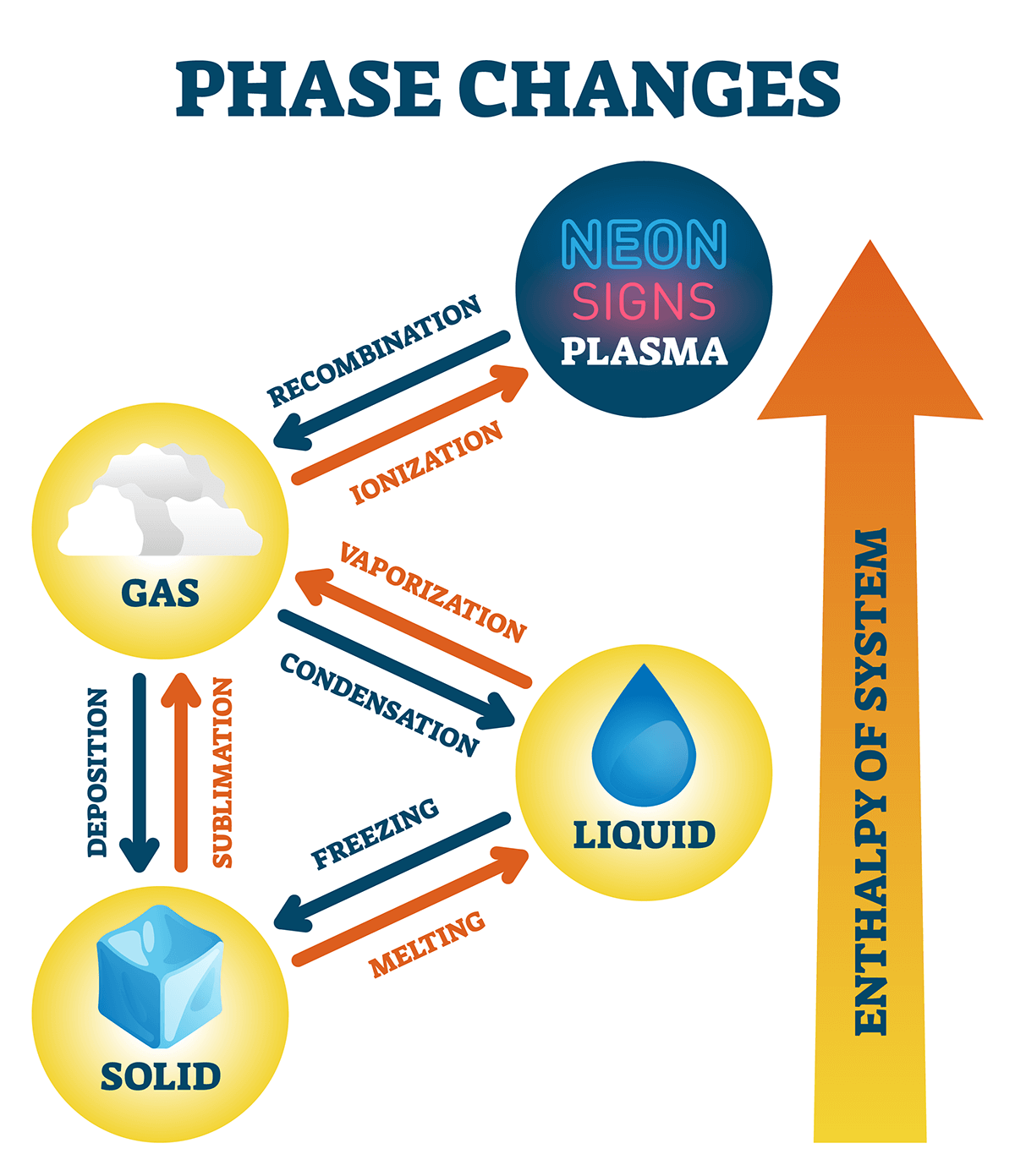Matter exists chiefly in four forms: solid, liquid, gas, and plasma. The conversion of matter from one state to another is called a phase change. This process occurs when a large amount of energy is gained or lost. Phase change also depends on factors like pressure and temperature.
Different Types of Phase Change
A phase is a form in which a substance exists. On earth, the different states of matter are solid, liquid, gas, and plasma. Each form of matter has unique properties including specific heats, melting points, and boiling points. Under certain conditions, different phases can coexist.
There are eight thermal processes through which matter can attain phase change. They are melting, freezing, evaporation, condensation, sublimation, deposition, ionization, and recombination. These eight phases exist under different temperatures and pressure conditions.
- Freezing: Change of a substance from liquid phase to solid
- Melting: Change from solid phase to liquid
- Vaporization: Change from liquid to gaseous form
- Condensation: Change from gas to liquid form
- Sublimation: Change from solid to a gas without becoming a liquid
- Deposition: Change from gas to solid without becoming a liquid
- Ionization: Change from a gas phase to plasma (ionized particles)
- Recombination: Change from plasma to gas

Relationship between Phase Change and Heat Transfer
When matter undergoes a phase change, heat is either absorbed or released. This process is called heat transfer, and it can occur in three ways: conduction, convection, and radiation.
Latent heat transfer vs sensible heat transfer
Heat transfer comprises latent and sensible processes. Latent heat transfer is a phenomenon where the phase change occurs without any change in internal temperature. Whereas in sensible heat transfer, phase change does not occur but the internal temperature changes.
For example, consider sunlight warming a glass of water. The water absorbs the thermal energy but doesn’t change its phase. However, the water reaches a higher temperature as heat is added. This process demonstrates sensible heat transfer – one that you can sense through temperature measurement.
For an example of latent heat transfer, consider a glass filled with ice cubes. The ice cubes receive thermal energy from the same sunlight, and as a result, begin to change their phase from solid to liquid. The temperature of the ice will remain at 0°C (32°F) until all of the ice has melted. This phenomenon is called latent heat transfer.
Phase Change Materials as an Engineering Tool
Engineers harness the physical phenomenon of phase transition in applications that require storing or releasing thermal energy. Phase change materials (PCMs) act like a battery that can store thermal energy when melting or vaporizing. This stored energy can be released back when the material is cooled again. Engineers use PCMs for the thermal control of buildings, photovoltaic plants, hot and cold water storage systems, and thermal management of electronic components.
Paraffin wax is one of the commonly used PCMs. Other categories of PCMs include hydrated salts, non-paraffin organics, and metallic phase change materials.
